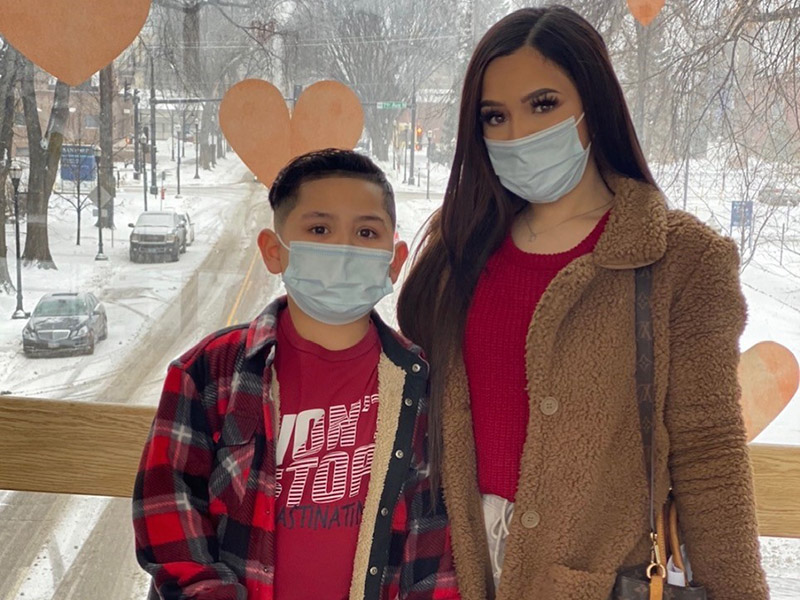Desiray Castillo thought her family had made it through their bout with COVID-19 relatively unscathed.
When she tested positive in November, she dealt with the generally minor symptoms that so many people report: fever, chills and aches. Like so many children who get COVID-19, her 7-year-old son Tristian received a positive test, but didn’t have any symptoms of the disease at all.
Five weeks after his positive test however, Tristian woke up in the middle of the night with a fever, telling his mother, “it feels like my stomach is burning inside.”
Learn the latest: COVID-19 and vaccine information from Sanford Health
Desiray brought her son into Sanford Health. Initially not wanting to stay in the hospital, the Castillos went home, but 24 hours later they were in the emergency room, with Tristian’s fever up to 105 degrees.
Multi-inflammatory syndrome diagnosis
“They did some blood testing in the emergency room and the doctor came back down and said, ‘We’re going to take him upstairs.’ I didn’t realize until the fifth day of being there that I was in intensive care with my son,” said Castillo.
Unlike most kids who get COVID-19, Tristian had developed multi-inflammatory syndrome in children, or MIS-C, which causes multiple organ systems to become inflamed. In Tristian’s case, the inflammation included his heart and lymph nodes. He also developed a rash.
“When they told me that they saw swelling in his heart … that was hard. I didn’t know what they could do to help him at that point,” said Castillo.
The team at Sanford treated Tristian with IV immunoglobin to try and boost his immune system, and eventually put him on steroids to help with the inflammation. Slowly but surely, he began to improve. He wanted to eat again, his fever had gone down, and most importantly, his EKG results showed better heart function. After nearly a week in the ICU, Tristian was finally able to get out of bed. He spent some time in a play area, and on Christmas Eve his family brought him some gifts to open.
“The doctors came in and they said … ‘Hi buddy, you look so alive! What are you doing?’ And he was like, ‘I want to go to the cabin,’ which was the play area that they had. And the doctor (said), ‘How about you go home instead?’ I looked at him and I cried,” Castillo said.
Few children in U.S. develop MIS-C
MIS-C is rare. So far it has affected just over 2,000 people in the U.S., including 33 deaths, according to the Centers for Disease Control and Prevention. Only 10 cases have been reported in North Dakota.
It is not yet known why some children develop MIS-C, but the CDC reports children of certain races appear to be more prone to the disease, including those of Hispanic/Latino and Black backgrounds. More research is needed to find out why.
“There is a lot of fear that surrounds both COVID-19 and MIS-C,” said Dr. Michele Pasierb, who treated Tristian at Sanford. “But we have better ways of identifying it. … Our treatment modalities have been effective. All of our patients have done very well.”
Tristian is now back to his old self.
Long-term effects of MIS-C are fairly uncertain at this point. Doctors see no evidence of damage from the inflammation, but they will follow up with him for at least a year to make sure he stays healthy.
Information in this story was accurate when it was posted. As the COVID-19 pandemic changes, scientific understanding and guidelines may have changed since the original publication date.
Learn more
- ‘Perry the Caterpillar’ joins garden at children’s hospital
- Vaccines for Children program offers free immunizations
- Sanford Children’s in Fargo receives facility dog
…
Posted In Children's, COVID-19, Fargo, Heart, Specialty Care
